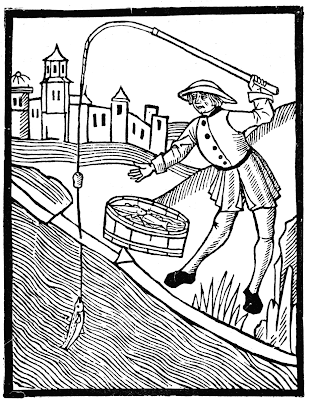1. Kirjoittaessani helsinkiläisestä puutarhuri Edbomista en ollut googlaillut tarpeeksi. Tarjolla olisi ollut Jessica Parland-von Essenin huomio huutokauppaluetteloista, Juliana-tyttären loppuelämän tiedot ja väite Edbomin kuolinpesän tontista, joka olisi pitänyt tarkistaa SSS:n julkaisusarjan perukirjareferaateista. Jotka olisi muutenkin pitänyt tarkistaa.
Puutarhuri, puutarha... Ingrid Granden opinnäyte Wohls gård : Historik och vårdplan för trädgårdsanläggningen ja Jenna Anderssonin Stor-Sarvlaks park och trädgård : En historisk utredning, nulägesbeskrivning och riktlinjer för framtiden.
2. Kirjoitukseni hopeavöistä aloitti SukuForum-ketjun, johon itsekin innostuin hakemaan tuomiokirjamainintoja Kotivuoren ylioppilasmatrikkelista.
3. Museotilastoja käsitellessäni unohtui, että HRI olisi tarjonnut Käynnit museoissa ja Kansallisarkistossa 1980–2008. Lisäksi olisin voinut mainita, että vetovoimainen Mustasaaren Stundars tarjoaa verkossa virtuaalisen aikamatkan. Ja Tuusulan esiintymistä ensimmäisessä graafissa olisi voinut laajentaa linkittämällä Jaakko Holman gradun Totta vai tarua? : Aleksis Kiven kuolinmökin museoarvo ja aitous.
4. Alkoholihistorian yhteyteen olisi puolestaan sopinut HRI;n tilasto Päihtyneiden säilöönotot 1975–2008.
5. Entisajan vammaisista on ollut useita mainintoja. Positiiviseksi lopuksi aiheeseen ja tähän koosteeseen havaintoja Suomesta vuodelta 1922 kirjasta A Blind Esperantist's Trip to Finland and Sweden
The Finns have the reputation of being a silent race. At first they seemed to be rather shy, but as the week wore on they became increasingly anxious to talk to their foreign visitors. One felt everywhere, in the streets, in the “Akceptejo,” in the blind school, that they are a seriously-minded folk, somewhat slow in thought and very cautious in adding up bills, but thoroughly trustworthy and keenly anxious to promote universal fellowship. They seem to be idealists with a strong love of poetry, which one of them attributed to the rhythmic nature of their language, but which I venture to think is an essential part of their character. Their voices, like those of the Swedes, are very clear, and the tone of their famous mixed choir, “Suomen Laulu,” which sang unaccompanied in the concert room and in the theatre, was as pure and thrilling as that of the best choirs of the north of England without the least suspicion of harshness. It was with real delight that I heard an old grey-bearded bard in the theatre chant some runes of the great epic, “Kalevala,” to a beautiful old—perhaps pre-historic—modal melody. Here, too, we heard much Finnish music, saw national dances, and enjoyed a Finnish play acted in Esperanto.”


Ei kommentteja:
Lähetä kommentti